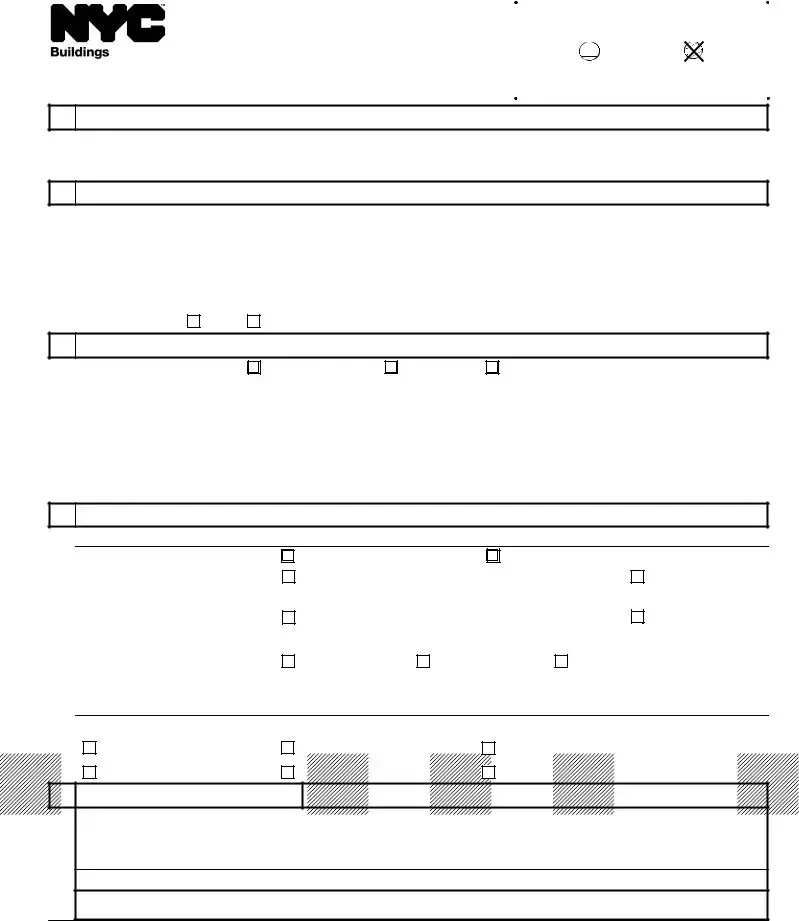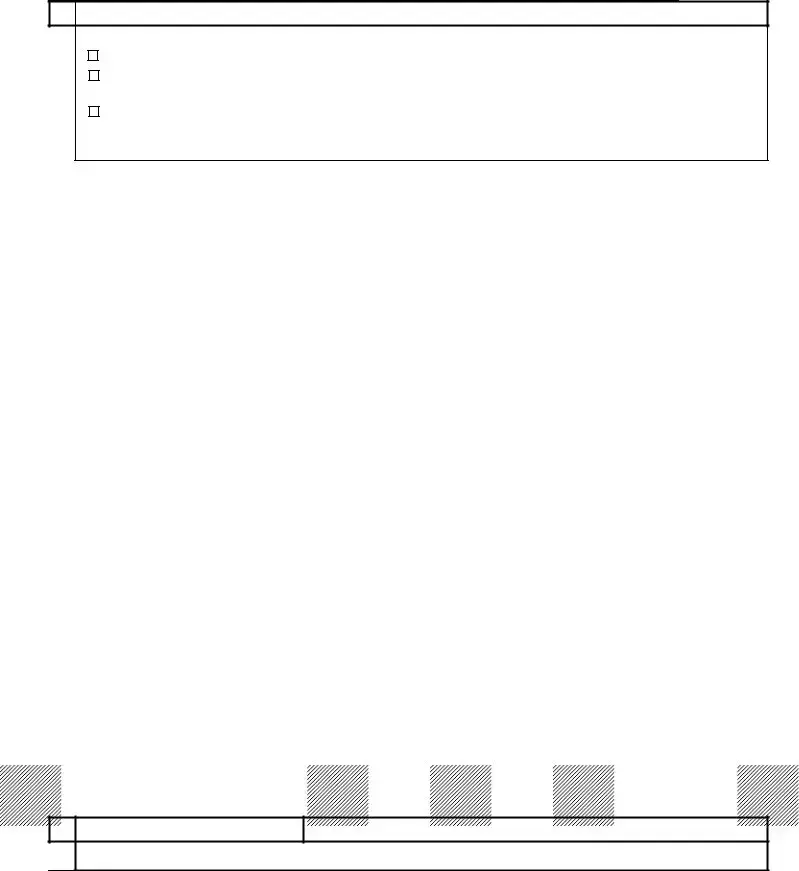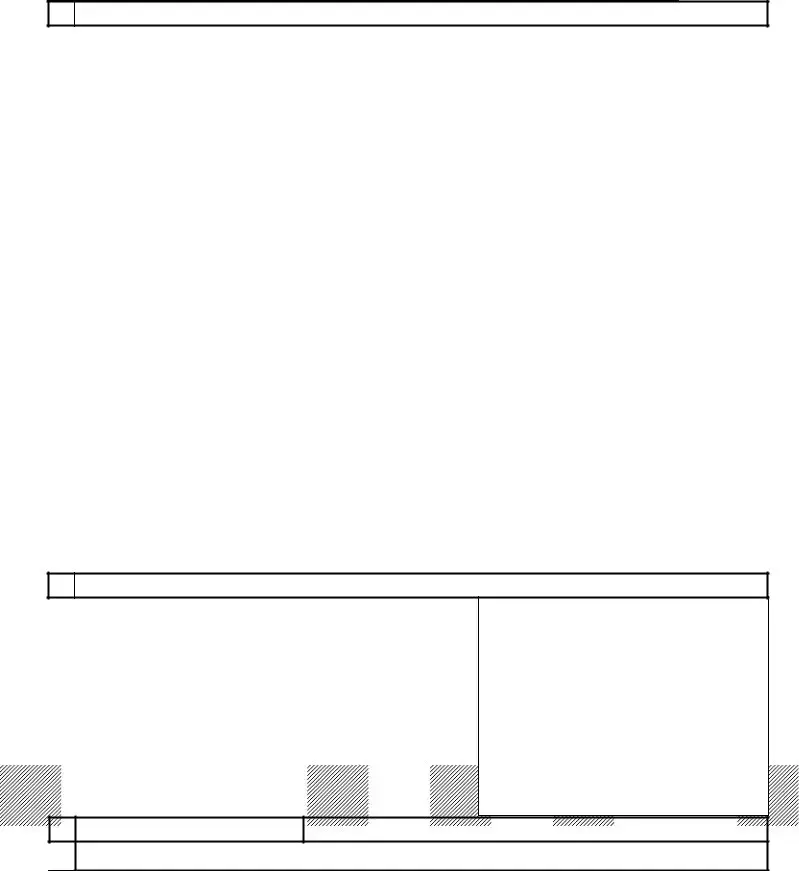The NYC CCD1 form closely resembles the ZRD1 (Zoning Resolution Determination Form) in its purpose of seeking official clarification or a variation. Both forms are specific to the New York City construction and zoning regulations, designed to address inquiries regarding building codes (CCD1) and zoning resolutions (ZRD1). Each form requires detailed project information, including location and applicant details, the nature of the request, and official documentation for review. They play a pivotal role in ensuring compliance with local laws and are instrumental for architects, engineers, and property developers in navigating the complex regulatory environment.
Another document similar to the CCD1 form is the PW1 (Plan / Work Application). The PW1 serves as a comprehensive application for various construction-related projects within New York City, requiring detailed project and applicant information, much like the CCD1. Both forms facilitate regulatory compliance by providing a structured format for submitting essential project details to the Department of Buildings. However, while the CCD1 is focused on seeking determinations or clarifications on building codes, the PW1 is broader, encompassing applications for permits, construction declarations, and compliance with zoning regulations.
The Alteration Type 1 (Alt1) Application closely aligns with the CCD1 form in its involvement in the construction approval process, specifically for major alterations that will change a building's use, egress, or type of occupancy. Like the CCD1, it requires detailed submission of project and applicant information to the Department of Buildings for approval, ensuring that proposed changes comply with the city's construction codes and zoning laws. Both documents are key to the pre-construction phase, aiding in the acquisition of necessary permissions for construction projects.
The DOB NOW: Build applications mirror the CCD1 form in their digital approach to construction-related approvals and permits. DOB NOW is an online platform that streamlines the submission of applications, plans, and documents for review and approval by the NYC Department of Buildings. Both the CCD1 form and DOB NOW applications serve to simplify the regulatory compliance process, though the CCD1 form is specifically geared towards requests for code determinations, while DOB NOW encompasses a wide range of construction-related applications and permits, promoting efficiency and accessibility in the construction approval process.
The Request for Letter of No Objection (LNO) shares similarities with the CCD1 form in its procedural function within New York City's regulatory framework. Property owners or their representatives submit an LNO request when informal documentation of compliance with zoning and building codes is necessary, typically for non-conforming but existing conditions. Similarly, the CCD1 form seeks formal determinations or clarifications on code compliance, making both essential for legalizing or confirming the status of construction projects and building operations in accordance with city regulations.
The BIS Job Application Number Form is closely related to the CCD1 form in its integral role within the NYC Department of Buildings' filing and project tracking system. Both forms require submission of detailed project and applicant information. However, the BIS Job Application Number Form is primarily used to obtain a unique identification number that allows for the tracking and management of building projects, whereas the CCD1 form specifically addresses requests for code determinations or clarifications.
The Temporary Certificate of Occupancy (TCO) Application shares objectives with the CCD1 form by facilitating progress in construction and building use under the city’s regulatory conditions. While the CCD1 seeks determinations or variances regarding building codes, the TCO application process allows buildings to be occupied temporarily, even if construction is not fully complete, provided that essential safety measures are in place. Both forms are crucial for advancing construction projects within the legal and safety standards set by the city.
The Sidewalk Shed Permit Application parallels the CCD1 form in its purpose to ensure public safety and compliance with city regulations during construction projects. While the CCD1 form focuses on the interpretation or variation of building codes, the Sidewalk Shed Permit Application is necessary when construction work poses a risk to pedestrians, requiring a structure to protect them. Both documents are part of the broader framework of permits and approvals needed to conduct construction work responsibly in New York City.
The After Hours Variance (AHV) Application, although distinct in purpose, complements the CCD1 form's role in the construction approval and regulatory compliance process. The AHV allows for construction work outside normal business hours, subject to specific conditions and approvals. Like the CCD1, it addresses exceptions to standard regulations, facilitating project progress while ensuring adherence to safety and community standards. Both forms demonstrate the city's commitment to balancing construction needs with public welfare.
The Construction Fence Permit Application resembles the CCD1 form in its emphasis on site safety and regulatory compliance. Required whenever a construction fence is erected around a job site, this application ensures that proper barriers are in place to protect the public and delineate the construction area. Similar to the CCD1's function of seeking code clarifications or variances, the Construction Fence Permit Application is a necessary step in preparing a site for construction, embedding safety and regulatory foresight into the planning process.


